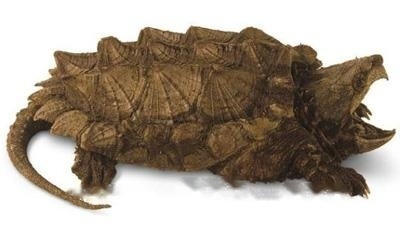
Snapping turtle
Real snapping turtles look like crocodiles fish, Set turtle and crocodile in one, so called true snapping turtle. Its head is relatively thick and cannot be completely retracted in
English name: Agkistrodon halys
pit viperSnake, also known as Tugong Snake and Grass Flying, is a small venomous snake that is distributed all over our country. Although the pit viper has certain toxicity, it has high medicinal value and is often eaten, so there are cases of artificial breeding of pit vipers.
Chinese name: Viper
Latin name: Agkistrodon halys
Alternative name : Tuqiuzi, Tugu Snake, Tububag, Tugouzi Snake, Grass Flying, Qicunzi, Tugong Snake
Kingdom: Animal Kingdom
Department: Chordate
Subphylum: Vertebrate subphylum
Class : Reptiles
Order: Squamata
Family:Viperidae
Genus: PitviperSubspecies:Snake
Distribution area: Distributed in most parts of China
Food: rats, frogs, birds, insects, Rabbit
Reproduction: Ovoviviparous
Medicinal Value: Expelling wind, calming, relieving pain, strengthening
Representative species: Pittospora, Pittosporum, Bamboo leaf green
ViperSnake Body length is 60-70 cm, the head is slightly triangular, the neck is thin, with cheek fossa, the head and neck are clearly distinguished, the back is light brown to reddish brown, there is a dark "∧"-shaped spot on the back of the head, and the ridge is straight. There are two rows of dark brown round spots, staggered and slightly juxtaposed, with dorsal scales outside and ventral There is a row of black-brown irregular thick spots between the scales, slightly star-shaped; the ventral surface is gray-white, densely covered with tan or black-brown fine spots. Internasal scales are wide and short, arranged in a ⊥ shape; preorbital scales 2, retroorbital scales 2(3), orbital crescent scales, temporal scales 2+4(3); upper lip scales 2-1-4(2- 1-3, 3-1-4) formula. Dorsal scales 21(23)-21-17(15) rows, the outermost row in the middle part is smooth or ribbed; ventral scales 137-173, anal scales intact; inferior caudal scales 29-54 pairs, few of which are single row. There are large symmetrical scales on the back of the head, cheek sockets in front of the eyes, and two longitudinal round spots on the back of the body.
The body color changes greatly, the back of the head and body is from gray-brown to earthy red, the head has a black band from the back of the eyes to the corner of the mouth, and there is a yellow-white fine line on the upper edge; the back of the body is alternately arranged with black-brown Round spots; ventral surface gray-white to gray-dark brown with irregular black spots; tail tip black.
ViperSnake also has the common name of piebald snake, which is a small venomous snake widely distributed in China. Pit vipers have strong cold resistance, so it is not difficult to raise them artificially. Pit vipers like to live in plains, hills and other places close to water sources.
Always inhabits in plains, hills, low mountains or fields, creeks and ditches with rubble, grasses, ditches, graves, bushes and fields. Curved into discs or waves. The reproduction, feeding, and activities of pit vipers are all restricted by temperature. When the temperature is lower than 10 °C, the pit viper hardly preys; below 5 °C, it enters hibernation; , generally do not prey. Nocturnal activities are frequent, and after the warm spring, they come out to find food one after another.
Pitviper is the most widely distributed and most numerous venomous snake in China. There are many debates on the classification of its species. It has been arguing for more than 60 years, mainly due to the lack of sufficient basis to convince the other side. To this end, Chinese researchers conducted a comparative analysis of 560 pit viper specimens from all over the country and the data collected by Maki (193). According to the number of scales, head shape, color spots and distribution areas, it is determined that the Chinese pit viper can be divided into three subspecies, namely the intermediate subspecies, the short-tailed subspecies and the Japanese subspecies.
pit viperSnakes mainly feed on rats, frogs, storks, birds, insects, etc. Artificially reared pit vipers try not to feed too simple food to avoid nutritional imbalance. Due to the relatively high medicinal value of pit vipers, there are already people who specialize in breeding pit vipers to get rich.
The reproduction, feeding and activities of the pit viper are all restricted by temperature. The pit viper hardly preys when it is below 10℃; it enters hibernation below 5℃; the predation peak is 20℃~25℃; 30 Above ℃ live in snake caves and generally do not prey. Nocturnal activities are frequent, and after the warm spring, they come out to find food one after another.